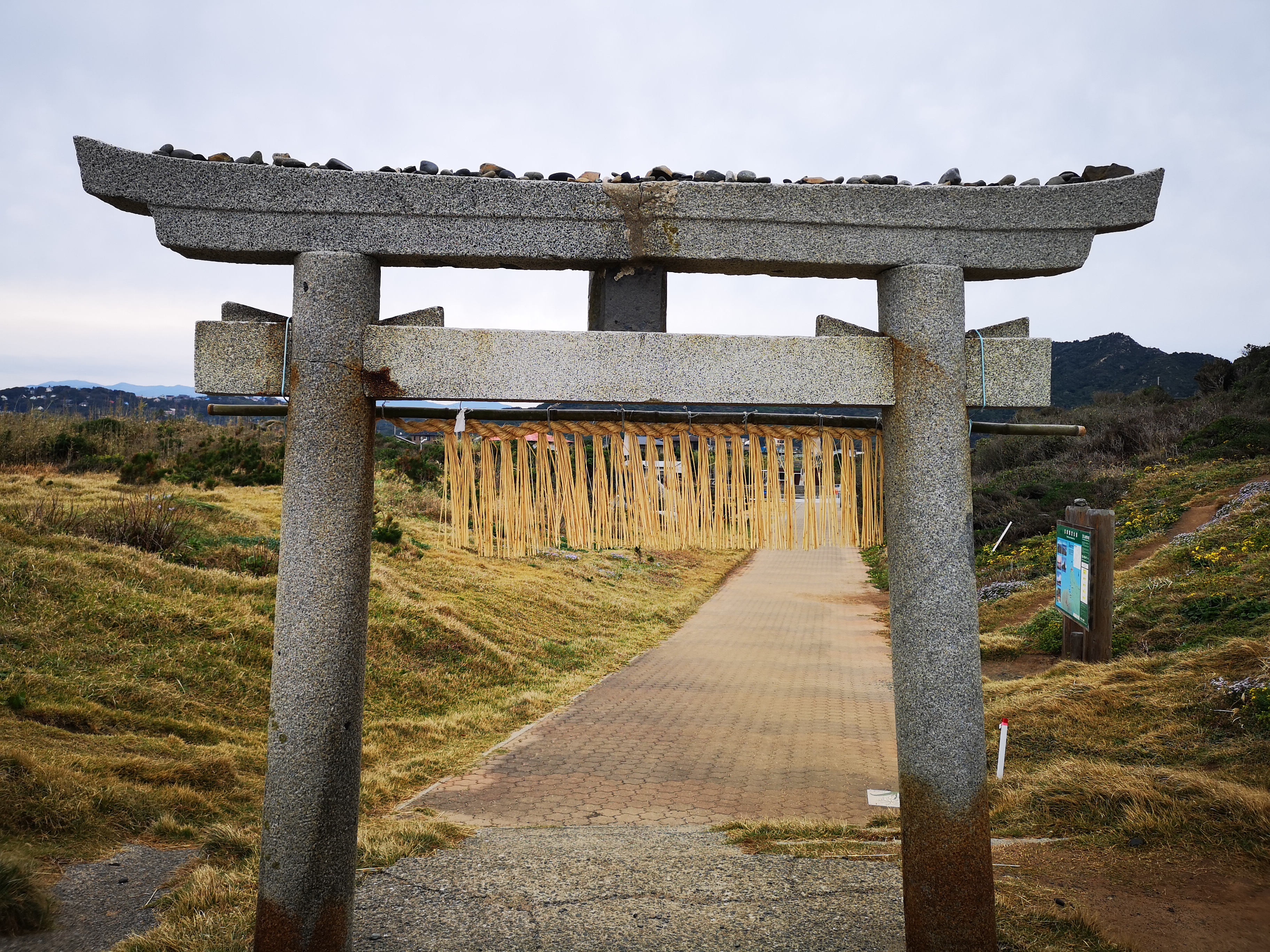スポンサーリンク
Contents
トトロの森 糸島 福岡のYouTuber 宇佐美ダイ

cof

cof

cof

cof

cof
となりのトトロ
出典: フリー百科事典『ウィキペディア(Wikipedia)』
『となりのトトロ』(英題:My Neighbor Totoro)はスタジオジブリ制作の長編アニメーション映画。宮崎駿監督作品。昭和30年代前半の日本を舞台にしたファンタジー。物語は、田舎へ引っ越してきた草壁一家のサツキ・メイ姉妹が、子どもの時にしか会えないと言われる不思議な生き物・トトロとの交流を描いていくストーリー。
ストーリー
小学生のサツキと妹のメイは、母の療養のために父と一緒に初夏の頃の農村へ引っ越してくる。引越し先の空き家には小さな黒いオバケが沢山住んでいた。最初はビックリした二人だったが、隣のおばあちゃんからそれは子供にしか見えず、害もなく、人が住み始めるといつのまにか居なくなるという話を聞いてサツキは拍子抜けし、メイは「つまんない」とぼやく。
サツキの通う学校が田植え休みの日、入院している母の見舞いに行った二人はオバケ屋敷のことを報告する。母がオバケ嫌いであることを心配したが、少しも怖がらずに「自分もオバケに会いたい」と言ってくれる母を見て、心強さを感じた二人は母が早く退院して一緒に暮らせることを願う。
そんなある日。1人で遊んでいたメイは庭で不思議な生き物を見つける。その生き物を追いかけて森に入ると、そこにはずっと大きな生き物が寝転んでいる。その生き物にメイが名を尋ねると、"トトロ"と答えたようにメイには聞こえた。その後、林の奥で眠っていた所を発見されたメイは、サツキと父にもトトロを見せようとするが、トトロが寝ていた場所が見つからず、やがて二人が笑いだしたため自分が言った事を信じていないのだと思い、本当にトトロを見たのだと怒って言い張る。しかし、そんなメイに父は「トトロはきっとこの森の主で、いつでも会えるわけではないのだ」と優しく諭し、三人でくすの木のある塚森へ向かい「これからもよろしくお願いします」と改めて引っ越しの挨拶をする。その晩、サツキは母あての手紙にこの時の出来事を書き記し、自分もトトロに会ってみたいと添える。
梅雨の季節となったある夜、サツキとメイが森にあるバス停で雨の中父の帰りを待っていると、そこへ頭に葉っぱを乗せたトトロがやって来る。ずぶ濡れのトトロを見かねてサツキがお父さんの黒い傘を貸してやると、トトロはお礼に木の実が入った笹の葉の包みを渡し、バスの姿をしたネコ(ネコバス)に乗って行ってしまう。数日後、二人は木の実を庭にまいたが、なかなか芽が出ずメイは数十日間毎日「まだでないまだでない」と言っている。さらに数日たったある夜、二人は就寝中にある物音に目を覚まし、庭を歩き回るトトロ達の姿を見つけて駆け寄る。やがて木の実はトトロの不思議な力で巨木へと育ち、二人はトトロと共にコマに乗って空を飛び、一緒に木の上でオカリナを吹いて遊ぶ。翌朝、目が覚めると巨木は消えていたが、かわりに小さな芽が生えていた。それを見た二人は、夢だけど夢ではなかったと大喜びする。
数ヵ月後。夏休みとなったある日、二人が隣のおばあちゃんと畑のトウモロコシを収穫していると、カンタが預かってきた病院からの電報を持ってやって来る。サツキは慌てて電話を借りるとこの事を父に伝え、母が体調を崩してしまい一時退院が延びる事を知る。しかし、いくら仕方ないと言い聞かせても駄々をこねてばかりいるメイに、とうとうサツキは「お母さんが死んじゃってもいいのね!?」と怒って大ゲンカしてしまう。だが、不安なのはサツキも同様であるため、家に戻った直後、母が死ぬかもしれないとおばあちゃんの前で大泣きしてしまった。その話を聞いていたメイが母の所に向い、姿を消している事が判明し、村中で探し回るが一向に見つからない。途方にくれたサツキは藁にもすがる思いでトトロに助けを求めに行く。寝ぼけ眼のトトロは「どうしたらいいかわからないの…」と泣き崩れたサツキを見て事態を察し、くすの木のてっぺんに登るとネコバスを呼んでくれた。サツキを乗せたネコバスは風のように走り、道に迷って泣いていたメイを見つける。メイが持っているトウモロコシを見たサツキはメイが母にトウモロコシを届けようとしたことを知った。
それを見たネコバスは二人を病院に連れて行く。そこには元気そうに父と話す母の姿があり、それを見た二人は安心する。母が二人の気配に気づき窓辺を見上げると、そこには『おかあさんへ』と彫られたメイが持ってきたトウモロコシが置かれていた。その後、二人は再びネコバスに乗って家まで送ってもらい、そこでカンタとおばあちゃんと合流すると、四人仲良く家路を歩く。その頃、トトロ達は今夜もくすの木の上でオカリナを吹いていた。
My Neighbor Totoro
My Neighbor Totoro (Japanese: となりのトトロ Hepburn: Tonari no Totoro) is a 1988 Japanese animated fantasy filmwritten and directed by Hayao Miyazaki and animated by Studio Ghibli for Tokuma Shoten. The film—which stars the voice actors Noriko Hidaka, Chika Sakamoto, and Hitoshi Takagi—tells the story of the two young daughters (Satsuki and Mei) of a professor and their interactions with friendly wood spirits in postwar rural Japan. The film won the AnimageAnime Grand Prix prize and the Mainichi Film Award and Kinema Junpo Award for Best Film in 1988. It also received the Special Award at the Blue Ribbon Awards in the same year.
In 1989, Streamline Pictures produced an exclusive dub for use on transpacific flights by Japan Airlines. Troma Films, under their 50th St. Films banner, distributed the dub of the film co-produced by Jerry Beck. This dub was released to United States theaters in 1993, on VHS and laserdisc in the United States by Fox Video in 1994, and on DVD in 2002. The rights to this dub expired in 2004, so it was re-released by Walt Disney Home Entertainment on 7 March 2006[1]with a new dub cast. This version was also released in Australia by Madman on 15 March 2006[2] and in the UK by Optimum Releasing on 27 March 2006. This DVD release is the first version of the film in the United States to include both Japanese and English language tracks, as Fox did not have the rights to the Japanese audio track for their version.
My Neighbor Totoro was critically acclaimed and has amassed a worldwide cult following in the years after its release. The film and its titular character, Totoro, have become cultural icons. While the film only grossed $6.1 million at the box office, it went to gross approximately $266 million from home video sales and at least $1.142 billion from licensed merchandise sales, adding up to at least $1.414 billion in total revenue, as of 2018.
My Neighbor Totoro ranked 41st in Empire magazine's "The 100 Best Films Of World Cinema" in 2010,[3] and Totoro was ranked 18th on Empire's 50 Best Animated Film Characters list.[4] A list of the greatest animated films compiled by Terry Gilliam in Time Out ranked the film number 1.[5] A similar list compiled by the editors of Time Out ranked the film number 3.[6] My Neighbor Totoro was also voted the highest-ranking animated film on the 2012 Sight & Sound critics' poll of all-time greatest films.[7] The character made multiple cameo appearances in a number of Studio Ghibli films and video games and also serves as the mascot for the studio and is recognized as one of the most popular characters in Japanese animation. Totoro was ranked 24th on IGN's top 25 anime characters.[8]
In 1958 Japan, university professor Tatsuo Kusakabe and his two daughters, Satsuki and Mei, move into an old house to be closer to the hospital where the girls' mother, Yasuko, is recovering from a long-term illness. Satsuki and Mei find that the house is inhabited by tiny creatures called susuwatari—small, dark, dust-like house spirits seen when moving from light to dark places.[note 1] When the girls become comfortable in their new house and laugh with Tatsuo, the soot spirits leave the house to drift away on the wind and find another empty house.
One day, Mei sees two white, rabbit-like ears in the grass and follows the ears under the house. She discovers two small spirits who lead her through a briar patch and into the hollow of a large camphor tree. She meets and befriends a larger version of the same kind of spirit, which identifies itself by a series of roars that she interprets as "Totoro". She falls asleep atop the large totoro, but when Satsuki finds her, she is on the ground in a dense briar clearing. Despite her many attempts, Mei is unable to show her family Totoro's tree. Tatsuo comforts her by telling her that this is the "keeper of the forest," and that Totoro will reveal himself when he wants to.
One rainy night, the girls are waiting for Tatsuo's bus and grow worried when he doesn't arrive on the bus they expect him on. As they wait, Mei eventually falls asleep on Satsuki's back and Totoro appears beside them, allowing Satsuki to see him for the first time. He has only a leaf on his head for protection against the rain, so Satsuki offers him the umbrella she had taken along for her father. Totoro is delighted at both the shelter and the sounds made upon it by falling raindrops. In return, he gives her a bundle of nuts and seeds. A giant, bus-shaped cat halts at the stop, and Totoro boards it, taking the umbrella. Shortly after, Tatsuo's bus arrives.
The girls plant the seeds. A few days later, they awaken at midnight to find Totoro and his two miniature colleagues engaged in a ceremonial dance around the planted nuts and seeds. The girls join in, whereupon the seeds sprout, and then grow and combine into an enormous tree. Totoro takes his colleagues and the girls for a ride on a magical flying top. In the morning, the tree is gone, but the seeds have indeed sprouted; it is left unclear whether or not the girls were dreaming.
The girls find out that a planned visit by Yasuko has to be postponed because of a setback in her treatment. Satsuki, disappointed and worried, tells Mei the bad news, which Mei does not take well. This leads to an argument between the two, ending in Satsuki yelling at Mei and stomping off. Mei decides to walk to the hospital to bring some fresh corn to Yasuko.
Mei's disappearance prompts Satsuki and the neighbors to search for her. Eventually, Satsuki returns in desperation to the camphor tree and pleads for Totoro's help. Delighted to be of assistance, he summons the Catbus, which carries her to where the lost Mei sits. Having rescued her, the Catbus then whisks her and Satsuki over the countryside to see Yasuko in the hospital. The girls perch in a tree outside of the hospital, overhearing a conversation between their parents and discovering that she has been kept in hospital by a minor cold, but is otherwise doing well. They secretly leave the ear of corn on the windowsill, where it is discovered by the parents, and return home on the Catbus.
Eventually, Mei and Satsuki's mother returns home, and the sisters play with other children, while Totoro and his friends watch them from afar.

